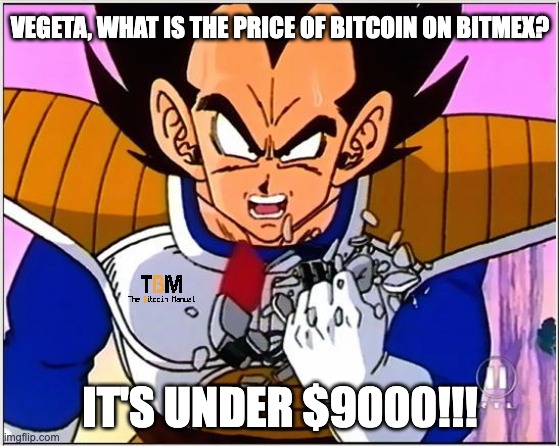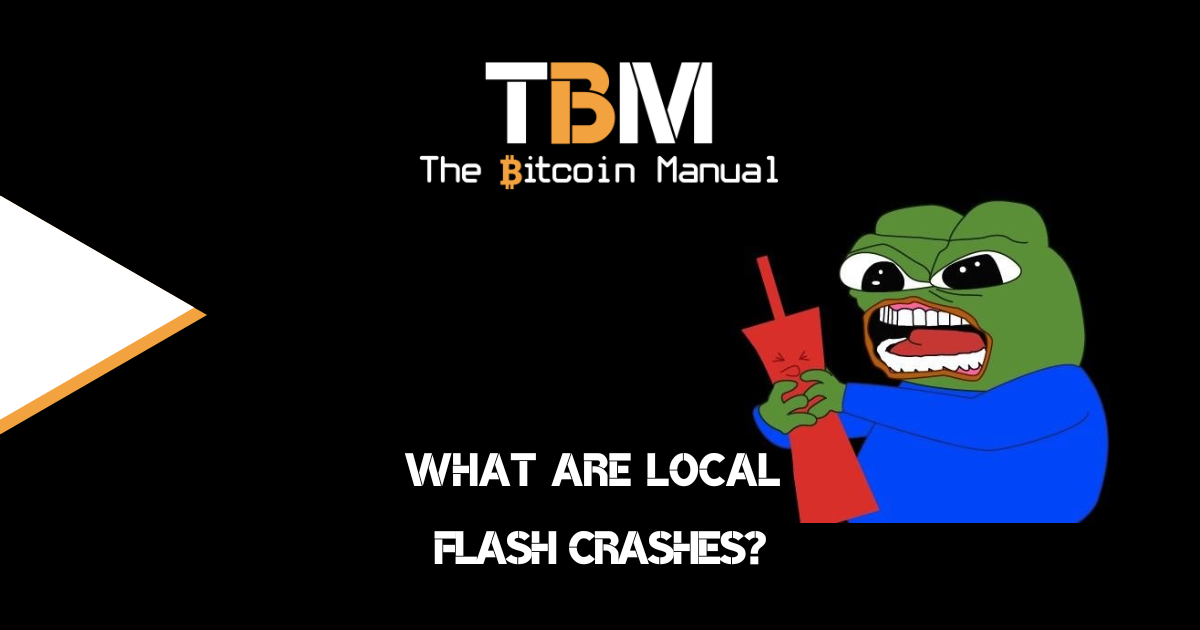For all its innovation, the Bitcoin market can be prone to dramatic price swings. While a healthy market experiences fluctuations, “flash crashes” stand out for their sudden and often inexplicable plunges.
Flash crashes were commonplace in the early days of Bitcoin. Still, as markets matured, exchanges became robust platforms offering deep pools of liquidity and, with easier access, demand and supply, could find an agreed-on price without YoYo’ing 50% daily.
That’s not to say a massive correction is out of the remit of possibility, and its likelihood should never be discounted to zero; a flash crash can happen at any time, be that a market-wide crash or an isolated local crash.
While a broader market crash often has some event behind it, like an exchange failing, a Bitcoin ban, or some FUD driving away participants, local flash crashes are a bit more puzzling.
These events can be incredibly confusing when they seem isolated to a single exchange, especially when Bitcoin’s price detaches from the broader market.
So, what exactly is a local Bitcoin flash crash?
Imagine this:
You check your usual Bitcoin exchange and see the price plummeting significantly while other major exchanges show no such movement. This is a local flash crash – a temporary price dislocation specific to that platform.
All exchanges aren’t created equal, and the markets they make for various trading pairs might not be as liquid as sellers require them to be at the time of sale.
For example, I am a seller trying to sell 100 Bitcoin on Coinbase for USD/USDT/USDC. In that case, there are likely enough retail traders, institutional traders, and arbitragers willing to provide me with buy orders to sell without much slippage, or I might incur a slight loss of a few basis points.
Alternatively, if I were to try to sell 100 Bitcoin on a local exchange in my native South Africa for South African Rands, the local market would not have the buy orders to absorb such a massive sale. I would eat into a large chunk of the order book, driving the price until my order is filled, and this is how an exchange can see a price dislodging.
But why would someone purposefully wish to tank the price of Bitcoin? Doesn’t that mean they’re getting less money for the sale of their asset?
Yes, but there are a few reasons why a trader would do this.
Sudden Sell-Off by Whales
“Whales” are individuals or entities holding vast amounts of Bitcoin. If a whale decides to unload a significant portion of its holdings on a particular exchange, it can overwhelm the buy orders and cause the price to tumble.
A whale might also be much less sensitive to slippage, as it has already locked in profits based on the liquidity available on the exchange at the time.
Technical Glitches
Despite all the hype around algorithms, AI, and trading bots, technology is fallible, and glitches on trading platforms can sometimes lead to erroneous price displays. As bots execute trades based on the rules they are given, high-frequency trading can leave their human counterparts scrambling should a bot act out of the ordinary or unexpectedly interpret the trading parameters.
These glitches can trigger automated trading bots to react as if there’s a genuine crash; it can drag down other traders who might have had leveraged positions, exacerbating the issue.
Limited Liquidity
Liquidity refers to the ease with which an asset can be bought or sold. Exchanges are always looking for the best way to deploy capital to earn fees and provide an optimised trading experience for users.
In some instances, exchanges might be used for a certain range of buyers and sellers that their order book can satisfy daily trades, and when orders of a certain size break that range, they might not be adequately prepared.
Since the local exchanges have fewer buyers and sellers than the larger platforms, a large sell order appearing on a less liquid exchange can dramatically impact the price there.
These local price drops can also be attributed to thinly traded pairs, such as Bitcoin trading against some obscure altcoins or one of the smaller stablecoins.
Tax season
Depending on your country, tax season, tax laws, and wash trading rules, traders might do the math and feel it’s better to sell Bitcoin at a loss.
Selling Bitcoin for a loss might seem counterintuitive, but there’s a clever strategy at play: tax-loss harvesting. This tactic involves strategically selling an asset at a loss to offset capital gains taxes owed on other investments.
If you aim to maximise your losses, you might be encouraged to drive the price down with your sale.
Bank run
Suppose an exchange is rehypothecating funds and doesn’t have the assets it claims to have on its books. If the market gets a sense that an exchange is bankrupt or has liquidity issues, this can drive panic, and traders are willing to sell at any price to secure whatever liquidity is available and close out their positions.
The Bitmex crash to under 9000
Let’s use the recent Bitmex crash you mentioned as an example. On Monday, March 18, 2024, Bitmex, the offshore derivatives exchange, witnessed Bitcoin briefly dropping to $8,900.
This was no regular dip; this wasn’t your grandma’s mild salsa dip. No, it was approximately 87% of Bitcoin’s global trading price of $67,400 at the time.

But what gives?
Is Bitmex living in the future, and are they already pricing in the past, halving correction?
No, it seems more like a glitch in the matrix.
“Bitcoin down to $8,900 on BitMEX?" Well, not quite the whole picture.
— BitMEX (@BitMEX) March 19, 2024
Yes, we are investigating potential misconduct by traders on our Bitcoin-USDT Spot market (👀Did you even know we offer Spot trading?)
However, this incident had NO impact on our billion-dollar derivatives… pic.twitter.com/qWXXnyQxjw
While the reasons remain unclear, some speculate it could have been due to a combination of factors like whale activity, liquidation of leveraged positions, a rouge trader, or an algorithmic trading bot that went haywire.
Either way, someone went to BitMex, hit sell and dumped the entire position of 400 BTC without emotion or remorse.
Bitmex has come out and stated that they are looking into it and that funds are SAFU, and we’ve all heard that line before, haven’t we yet? There were also reports that BitMEX halted withdrawals shortly after the crash, further stirring a ruckus among its users and the community.
We are investigating unusual activity in the past few hours involving a user selling large orders on our BTC-USDT Spot Market.
— BitMEX (@BitMEX) March 19, 2024
This does not affect any of our derivative markets, nor the index price for our popular XBT derivatives contracts.
The trading platform is operating…
It’s price discovery, as it should be
To the new Bitcoin holder, news of crashes can still be unsettling and highlight that exchanges are not the be-all and end-all when pricing Bitcoin.
There are reputable, liquidity-rich exchanges and thinly traded exchanges, with arbitrage traders in between constantly trying to move capital to where they can get the best price and profit from the difference.
When prices break away from the general price, it signals to the market that there is either demand or oversupply of Bitcoin in a particular part of the world.
The important takeaway from local flash crashes is that they are short-lived, and one exchange does not make the market. If someone wants to tank a local spot market, the broader market usually acts as a corrective force, and the price on the affected exchange often rebounds quickly.
Those looking for cheap Satoshis with the cash to spare will jump into the market and act as the speed breaks for decent until enough buyers go in to gobble up that sell order.
The general price range you see on Google or coin pricing sites is always just an assumption, an aggregate price taken from various exchanges, and doesn’t tell the whole story of all Bitcoin trades for that day.
Bitcoin trades on centralised markets, on-chain, P2P, second layers, and side chains. There will never be one price for the coin, and opportunities will always exist to exploit price differences.
This is an open, free market at work.




